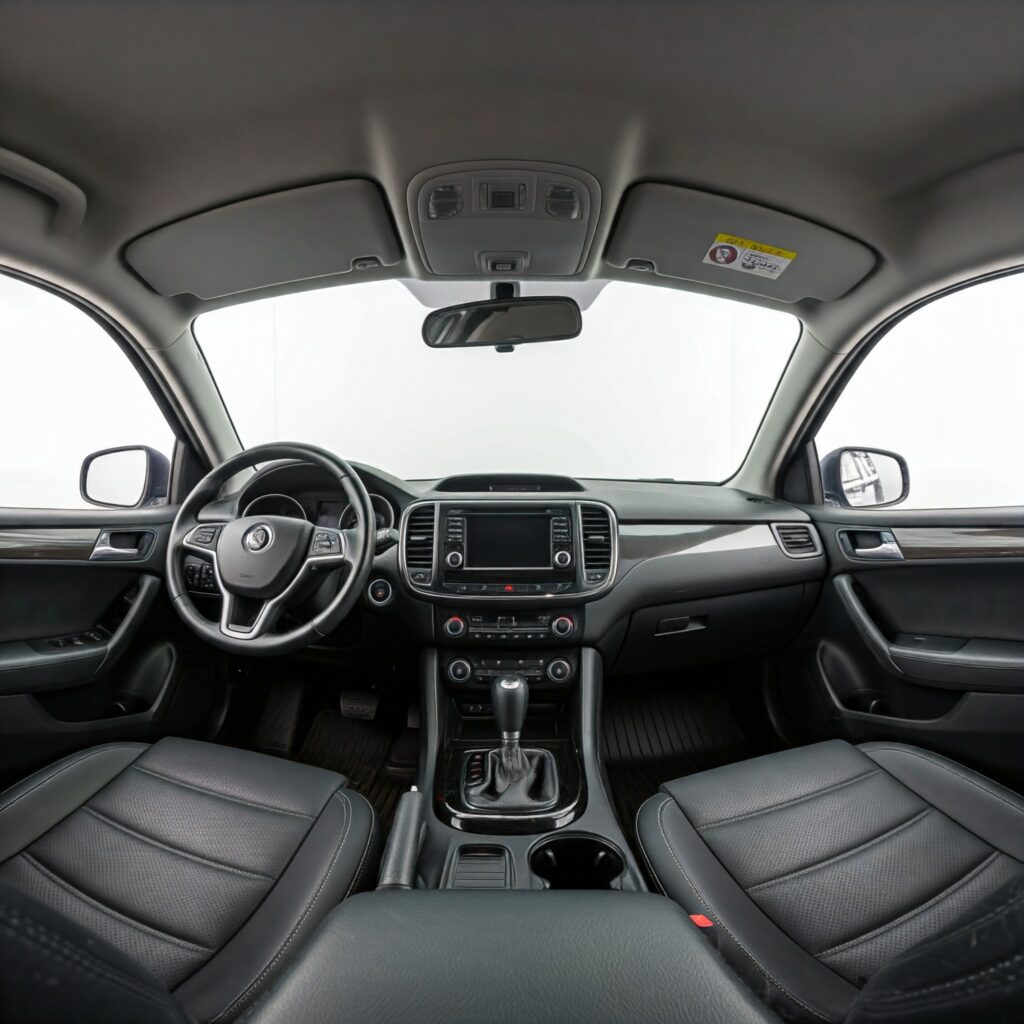Understanding Car Smells and Stains: How to Remove Them
Cars, like homes, are environments that can trap odors and stains over time. Whether caused by spills, food, pet accidents, or the natural buildup of dust and dirt, the unpleasant smells and stains in a vehicle can quickly become an issue. Understanding what causes these smells and stains and knowing how to address them is key to maintaining a clean and fresh car interior. This guide will help you identify common odors and stains in cars and provide effective tips on how to remove them.

Common Car Smells and Their Causes
1. Musty or Mildew Smell
A musty or mildew smell in your car is often the result of moisture being trapped in the vehicle. This could be from wet weather, spilled drinks, or leaving windows open during a rainstorm. Over time, the dampness can cause mold and mildew to grow, creating an unpleasant odor.
How to Remove It:
- Dry the Car: First, ensure that the car is dry. Leave the doors open on a dry, sunny day to allow air circulation.
- Use a Dehumidifier: Consider placing a portable dehumidifier or moisture-absorbing products, such as silica gel packs or baking soda, in the car.
- Clean with Vinegar: Mix a solution of white vinegar and water (1:1 ratio) in a spray bottle and spray it onto the affected areas. Let it sit for 15-20 minutes before wiping it off with a clean cloth.
- Professional Detailing: If the smell persists, a professional detailing service may be necessary to address hidden mold and mildew.
2. Food or Spilled Drink Smell
Food crumbs, spilled coffee, or leftover fast food can leave lingering odors in the vehicle. If left untreated, these smells can permeate fabric seats and carpets, making your car smell unpleasant.
How to Remove It:
- Vacuum and Wipe: Start by vacuuming up any food crumbs and debris. Wipe down the interior surfaces with an all-purpose cleaner, ensuring you target areas like cup holders and food storage compartments.
- Baking Soda: Sprinkle baking soda on the seats and carpets, leave it for several hours (or overnight), and vacuum it up. Baking soda is great at neutralizing odors.
- Carpet Cleaning: For more stubborn food stains, use a fabric or upholstery cleaner that’s safe for automotive use. You can also use a mixture of water and dish soap to scrub affected areas gently.
3. Pet Odor
Pets, while great companions, can leave behind strong odors, especially if they have an accident in the car or shed a lot of fur. Pet odors can seep into the upholstery, carpet, and even the air vents, leading to a persistent smell.
How to Remove It:
- Vacuum Thoroughly: Use a vacuum with a pet hair attachment to remove any loose fur. Vacuum both the seats and carpets, as well as between seat cushions.
- Use an Enzyme Cleaner: Enzyme cleaners are specifically designed to break down proteins in pet urine, which is often the source of the odor. Spray the affected areas and allow the cleaner to sit for a few minutes before wiping it off.
- Fabric Fresheners: Consider using a fabric freshener designed for pets, which can neutralize lingering odors. Air purifiers or air fresheners can also help eliminate the smell in the cabin.
4. Cigarette Smell
Cigarette smoke can linger in a car long after the last cigarette has been smoked. The odor settles into the fabric of the seats, carpets, and headliner, and can be difficult to remove.
How to Remove It:
- Vacuum the Interior: Start by vacuuming all surfaces to remove any ashes, cigarette butts, and residue. Pay close attention to the seats, carpets, and areas where the smoke may have lingered.
- Use Activated Charcoal: Activated charcoal can absorb odors. Place a bag of activated charcoal under the seats and in the trunk, and leave it there for a few days.
- Baking Soda or Vinegar: Sprinkle baking soda on the seats and carpets, let it sit for a few hours, and vacuum it up. Alternatively, you can spray a vinegar and water solution on fabric surfaces to neutralize the smell.
- Professional Cleaning: For heavy smoke smells, professional interior cleaning or an ozone treatment may be required to eliminate deep-set odors.
5. Gasoline or Chemical Smell
Spilled gasoline or exposure to strong chemicals like oil or antifreeze can lead to a strong, unpleasant smell in the car. These types of odors can cling to fabric and upholstery if not properly addressed.
How to Remove It:
- Absorb the Spill: If the spill is fresh, immediately use a clean cloth or paper towels to blot up as much liquid as possible.
- Clean with Soap and Water: Use a mild soap and water solution to clean the affected area. Make sure to clean both the surface and any spots where the liquid may have seeped into.
- Air Out the Car: Leave the windows open or run the air conditioning to help vent out the chemical odors. Use air fresheners or odor neutralizers to further help the process.
Stains and How to Remove Them
1. Coffee and Tea Stains
Coffee and tea spills are common in cars, especially when drivers are in a rush. These stains can leave behind both a discoloration and a lingering odor.
How to Remove It:
- Blot the Stain: Quickly blot up the excess liquid with a clean cloth to avoid spreading the stain.
- Use a Cleaning Solution: Mix dish soap with warm water and gently scrub the stained area with a soft brush or cloth. For tough stains, apply a mixture of equal parts white vinegar and water, and blot it up with a clean towel.
2. Mud and Dirt Stains
Mud and dirt stains are inevitable when driving in rainy or muddy conditions. These stains often leave behind marks on the seats and carpets.
How to Remove It:
- Let the Mud Dry: Allow the mud to dry before attempting to clean it. This will prevent smearing and make it easier to remove.
- Vacuum: Once the mud is dry, vacuum up as much as you can.
- Scrub with Soap and Water: Use warm water and a mild detergent to scrub the stain, followed by blotting it with a clean cloth. Repeat the process if necessary.
3. Oil or Grease Stains
Oil, grease, or other lubricants that spill in the car can leave behind dark, stubborn stains that are hard to remove.
How to Remove It:
- Blot the Stain: First, blot up any excess oil or grease with a paper towel or clean cloth.
- Apply Cornstarch: Sprinkle cornstarch or baby powder on the stain to absorb excess oil. Let it sit for about 15 minutes before vacuuming it up.
- Use Dish Soap: Scrub the remaining stain with a mixture of dish soap and warm water, then blot dry.
4. Ink Stains
Ink stains from pens or markers can be tough to remove, but with the right treatment, they can be eliminated.
How to Remove It:
- Apply Rubbing Alcohol: Dab a cloth with rubbing alcohol and gently blot the stain. Avoid rubbing it, as this can spread the ink.
- Use a Fabric Cleaner: If rubbing alcohol doesn’t fully remove the stain, a commercial fabric cleaner or upholstery stain remover can help. Follow the manufacturer’s instructions for best results.
Conclusion
Odors and stains in your car are inevitable, but they don’t have to be permanent. By identifying the source of the smell or stain and using the appropriate cleaning techniques, you can restore your car’s interior to its former cleanliness. Whether you’re dealing with the musty scent of mildew, the pungent odor of pet accidents, or the stains from coffee spills, there are effective solutions to tackle every problem. Regular cleaning and maintenance, along with quick action when spills or odors occur, will ensure your car stays fresh and comfortable for years to come.
